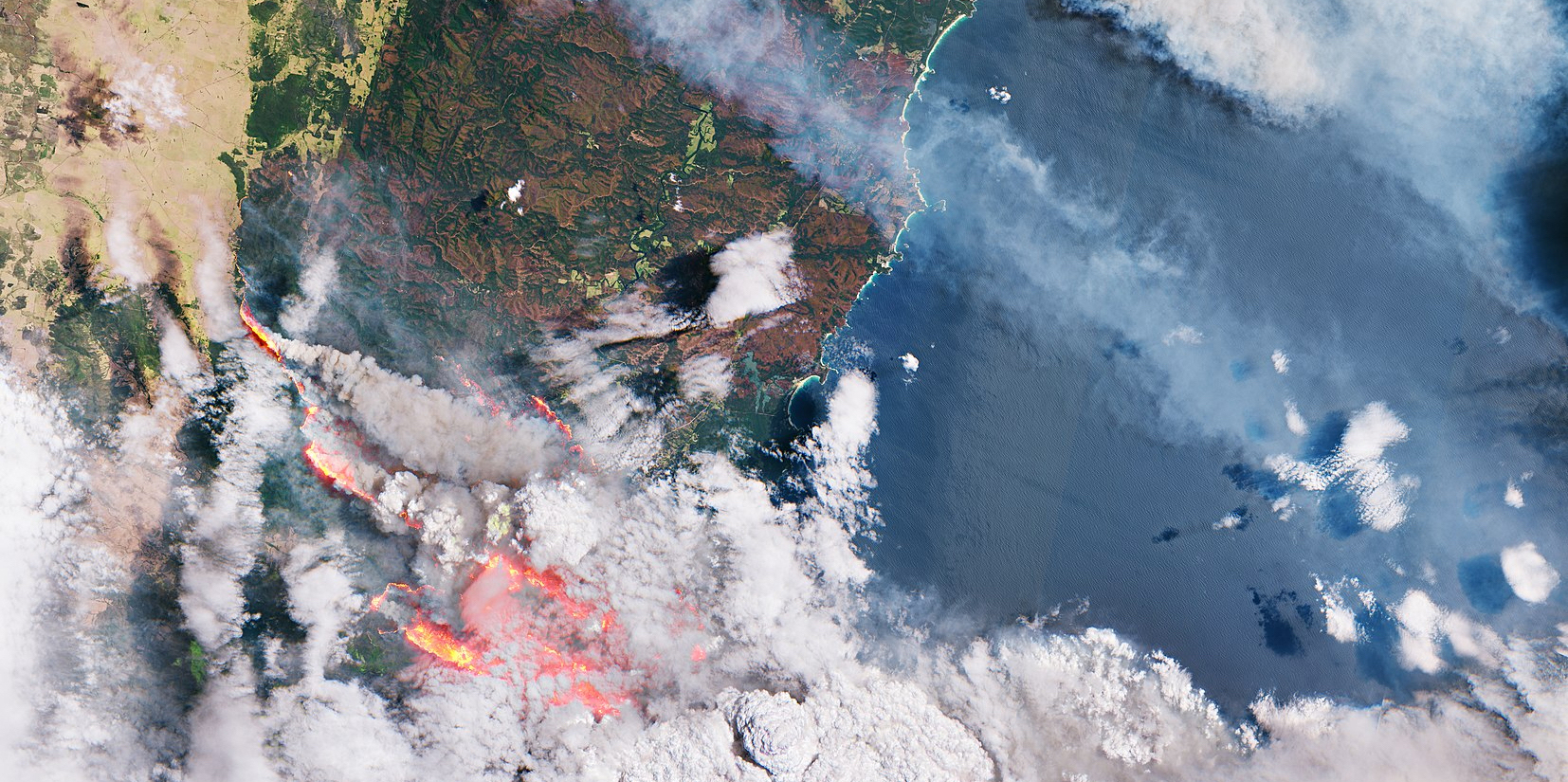Europe’s Fiery Future: Rethinking Wildfire Policy
Climate change plays a crucial role in increasing the risk and extent of wildfires. While the US and Australia have been particularly affected this year, Europe will increasingly face similar challenges, argues Christine Eriksen in this CSS Policy Perspective.

Australia’s New South Wales south coast in flames and charred, 31 December 2019. Imagecontains modified Copernicus Sentinel data 2019. ESA / CC BY-SA 3.0 IGO
Key Points
- The climate crisis is revealing a positive feedback loop caused by the interplay between four key factors: land use, fire exclusion, tree dieback, and a hotter and drier climate.
- Air-quality control has prevented many hazard-reduction burns. Yet, smoke for a limited period, in a limited area, during a planned prescribed burn is preferable to the deadly smoke levels experienced during this year’s firestorms.
- Exacerbated by problematic land management policies, wildfires are forcing emergency services, land managers and policymakers to adapt to a fiery future. How we manage the land and where we live matter. Local and indigenous environmental knowledge that understands the diverse, interconnecting aspects of a landscape are crucial to sustainable land stewardship. Knowing the difference between good and bad fire regimes is equally important.
- Recent wildfires and their social impacts are the harbinger of the future unless emergency services, land managers and policymakers start to listen to, and act on, local and indigenous knowledge and scientific evidence centering the need for sustainable fuel reduction strategies and traditional fire regimes.